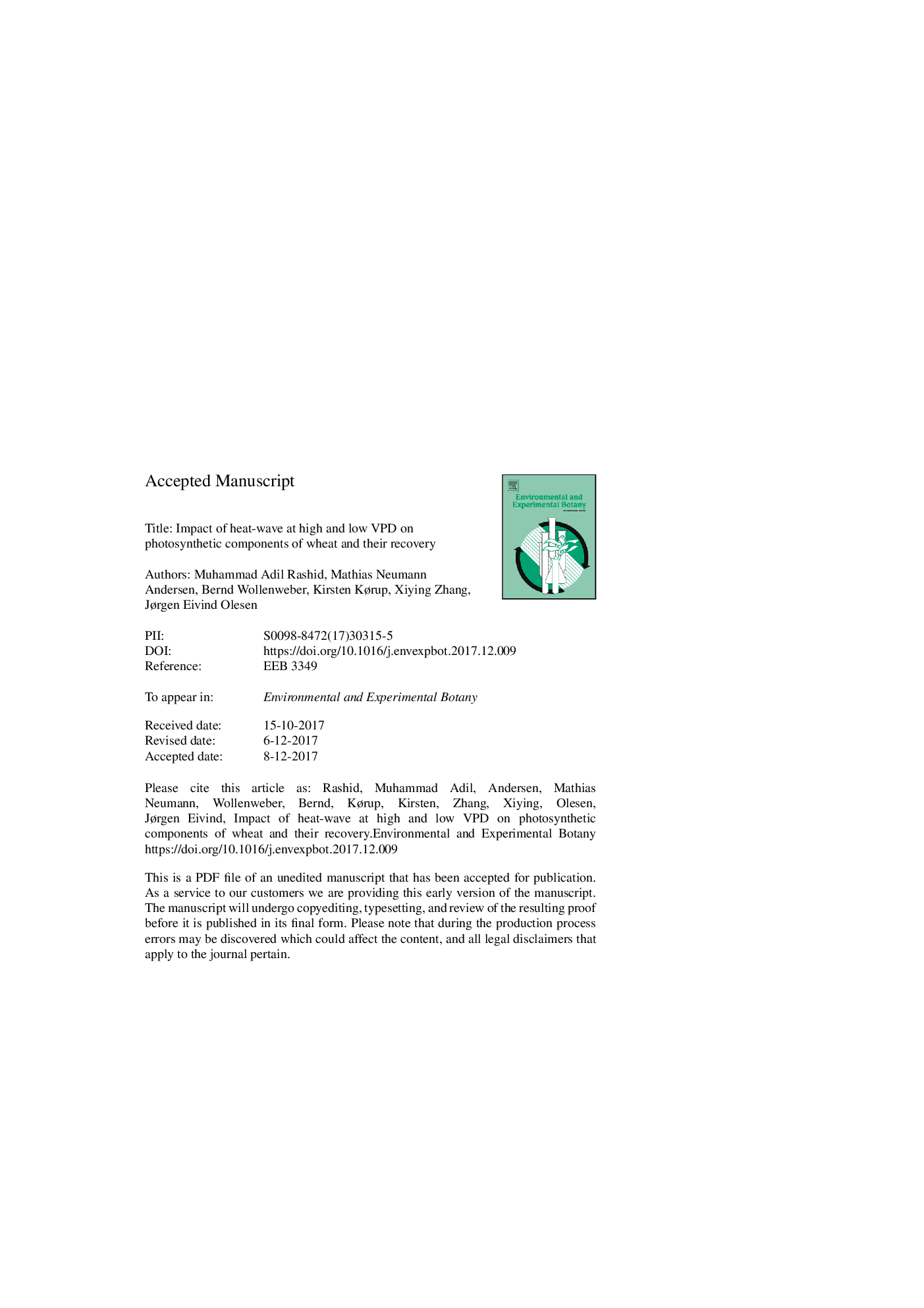| Article ID | Journal | Published Year | Pages | File Type |
|---|---|---|---|---|
| 8887102 | Environmental and Experimental Botany | 2018 | 36 Pages |
Abstract
Indirect effects of high temperature through increased vapor pressure deficit (VPD) are vital but often ignored in climate impact studies. We investigated the direct (via heat) and indirect (via VPD) effects of a post-anthesis applied high temperature episode on biochemical and diffusional components of photosynthesis in two wheat cultivars. Plants were exposed to a five-day episode of hot humid (HH: 36â¯Â°C; 1.96â¯kPa) or hot dry (HD: 36â¯Â°C; 3.92â¯kPa) climate, including normal climate (NC: 24â¯Â°C; 1.49â¯kPa VPD) as control. The capacity and sensitivity of different photosynthetic components that included diffusional and biochemical processes was investigated both during the stress and after six-days of recovery under NC. The results showed that, regardless of VPD, photosynthetic capacity under high temperature was largely impaired by biochemical limitations while the diffusional limitations were relatively insignificant. The processes involved in CO2-use (i.e. in vivo carboxylation efficiency and Vcmax) presented higher sensitivity than the processes involved in light-use (PSII efficiency, quantum yield and chlorophyll content index). Maximum photosynthetic capacity under high temperature was primarily restricted by limitations to RuBP-regeneration. Effects of higher VPD through diffusional limitations (stomatal and mesophyll conductance) were potentially insignificant. The effects of VPD through changes in transpiration were observed under HH, where significantly higher gs and increase in gs (and transpiration) over time due to acclimation led to drought, because the irrigation amounts per day remained same over the stress period. Resultantly, the photosynthesis under HH was co-limited by both RuBP-carboxylation and RuBP-regeneration. Irrespective of VPD, the after-effects of heat-wave were either non-existent or potentially insignificant, as most of the photosynthetic and related parameters recovered to their respective control. The results indicated that the effect of VPD through changes in soil moisture dynamics is an important confounding variable to consider in climate-impact studies. Higher sensitivity of CO2-use suggested that even moderately high temperature-episodes might limit photosynthetic capacity and hence crop productivity, thus reiterating the need to develop crop cultivars with greater tolerance to high temperatures.
Keywords
Diffusional limitationCO2 compensation pointSPADbiochemical limitationVcmaxVPDAQYLCPAmaxRdarkPSIIFv/FmAsatHeat stressPhotosynthetically active radiationTranspirationClimate changeDark respirationParchlorophyll content indexApparent quantum yieldintercellular CO2 concentrationPhotosystem IILight compensation pointmesophyll conductanceStomatal conductancevapor pressure deficit
Related Topics
Life Sciences
Agricultural and Biological Sciences
Ecology, Evolution, Behavior and Systematics
Authors
Muhammad Adil Rashid, Mathias Neumann Andersen, Bernd Wollenweber, Kirsten Kørup, Xiying Zhang, Jørgen Eivind Olesen,
